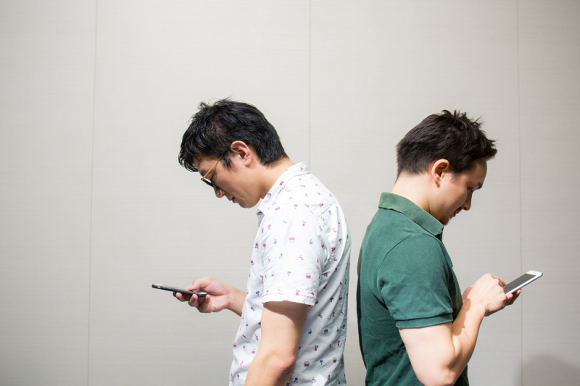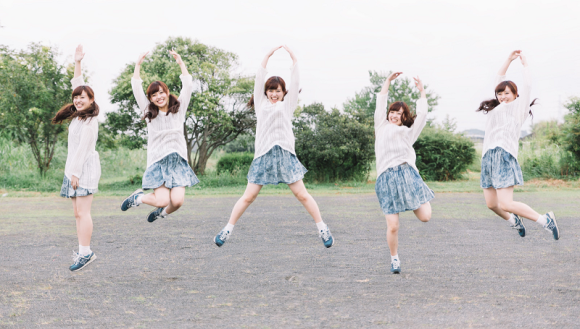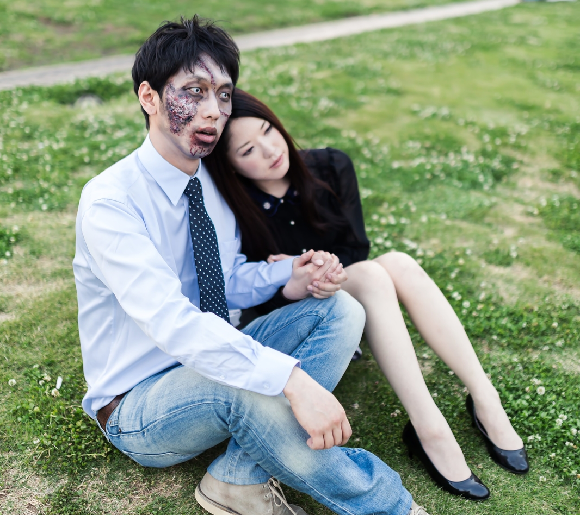
Some would call these anime’s proudest traditions, but not the respondents of a poll who’re craving something different.
Japanese animation is famous for more actively courting the attention of teens and young adults than its western counterpart. That said, anime is still, undeniably, a youth-oriented entertainment medium.
Because of that, when certain tropes or settings strike a chord with viewers in Japan, you can be sure that dozens of other series will do something similar. Yes, this does run the risk of saturating the market with similar content, but many producers are willing to gamble that a large number of fans will have moved on to other, non-anime hobbies by the time a feeling of repetition really sets in, and so they’d better get what economic lifeblood they can from current fans now, and by the safest, most reliable means.
In other words, stick around long enough, and you’ll start to notice patterns aplenty in anime scenarios. Student Internet portal My Navi Gakusei no Madoguchi recently polled 269 college students (129 male and 140 female) who regularly watch Japanese animation and/or read Japanese comics, asking them what anime and manga situations they’re sick of seeing over and over again, and found particularly negative reactions to the following five.
1. Body-swapping
This was actually a bit of a surprising choice. Sure, some moderately high-profile series, like Birdy the Mighty and Kokoro Connect, have involved characters switching or sharing bodies, and it’s the primary hook of mega-hit Your Name, but a lot of casual observers wouldn’t point to this as one of anime’s go-to storytelling devices. Nevertheless, many of the survey respondents said they’ve already seen enough works that fall into this category. One woman wrote the genre off with “You know what’s going to happen,” and apparently has no desire to sit through another anime where the two souls learn to appreciate each other’s differences through joint body custody.
2. Time travel
Time travel series have been picking up steam, with the convention showing up in Re:Zero, Steins;Gate, and Puella Madoka Magica. “There’s a surprising sameness to [time travel anime],” declared one respondent, and she might have a point, as stories in this category almost always end up funneling the narrative towards a last-ditch attempt to avoid butting up against an unwanted future.
3. Harems
“They’re almost all exactly the same,” lamented one respondent, a problem which gets exacerbated by the current standard of 13-episode anime seasons. Introduce the main character, add potential romantic partners at the rate of one character per episode through meet cute or meet sexy moments, and by the time the harem is stocked, and there’s not much time left for anything of import to happen before the show has to wrap up.
4. Alternate world stories
Whisking the protagonist from our world to a parallel dimension where a grand adventure awaits is a quick and easy way to build a sense of mysterious tension and exotic excitement, but it’s also a tactic anime writers have been relying on since at least 1983’s Aura Battler Dunbine. “They’re boring, since you know what’s going to happen next,” grumbled one male respondent, with another giving the more specific complaint of “Eventually some god-like being makes an appearance, and that just spoils the fun.”
5. Bringing characters back from the dead
For a medium that’s extremely comfortable portraying violence, anime can sometimes be rather reluctant to let its stars rest in peace. “You just know they’re not actually dead,” said one male respondent.
The modern anime era, in which revenue generated from character merchandise is such an important channel of lifeblood for anime production companies, means that killing off a popular character is often a poor economic move, even if it’s an interesting narrative one. Resurrecting heroes and heroines isn’t exclusive to newer shows, though, as if you were an anime fan in the ‘90s you saw major characters in Dragon Ball Z, Sailor Moon, and Fushigi Yugi eventually shake off death like it was just a particularly nasty cold.
Still, that doesn’t change the fact that participants in the survey wish that some characters, and some of these storytelling patterns, would just die already.
Source: My Navi Gakusei no Madoguchi via Nico Nico News via Jin
Top image: Pakutaso
Insert images: Pakutaso (1, 2, 3, 4, 5)
Follow Casey on Twitter, where he says no matter how much you hate alternate world stories, you should still watch Escaflowne.






 Five anime/manga series praised by Japanese fans for their realistic human relationships【Survey】
Five anime/manga series praised by Japanese fans for their realistic human relationships【Survey】 What’s more important in making a great anime, characters or story? Japanese fans sound off
What’s more important in making a great anime, characters or story? Japanese fans sound off Large portion of Japanese fans are willing to drop an anime after one bad episode, survey says
Large portion of Japanese fans are willing to drop an anime after one bad episode, survey says Do Japanese men like it when real women speak in anime-style voices? Survey investigates
Do Japanese men like it when real women speak in anime-style voices? Survey investigates Goku down! Vast majority of surveyed college students in Japan haven’t read the Dragon Ball manga
Goku down! Vast majority of surveyed college students in Japan haven’t read the Dragon Ball manga Private booths are coming to Japan’s Shinkansen bullet trains even sooner than we’d thought【Video】
Private booths are coming to Japan’s Shinkansen bullet trains even sooner than we’d thought【Video】 Japanese beef bowl chain Sukiya’s 2026 Smile Box lucky bag basically pays for itself
Japanese beef bowl chain Sukiya’s 2026 Smile Box lucky bag basically pays for itself Top Japanese cosplayer Enako returns to Comiket after 6 years, creates mayhem with admirers
Top Japanese cosplayer Enako returns to Comiket after 6 years, creates mayhem with admirers The Purple Lucky Bag from Village Vanguard is an extra-large waste of money
The Purple Lucky Bag from Village Vanguard is an extra-large waste of money Dragon Quest Burgers and Slime drinks are coming to McDonald’s Japan【Video】
Dragon Quest Burgers and Slime drinks are coming to McDonald’s Japan【Video】 Rakuten randomly offers 58 New Year’s osechi feasts in Japan, but did we get a star or a dud?
Rakuten randomly offers 58 New Year’s osechi feasts in Japan, but did we get a star or a dud? Japanese shiitake mushroom snacks from Don Quijote, created for people who don’t like mushrooms
Japanese shiitake mushroom snacks from Don Quijote, created for people who don’t like mushrooms We taste makunouchi bento at four Japanese convenience store chains【Taste comparison】
We taste makunouchi bento at four Japanese convenience store chains【Taste comparison】 Coca-Cola Japan unveils new sakura design bottle for cherry blossom season 2019
Coca-Cola Japan unveils new sakura design bottle for cherry blossom season 2019 The 5 best Japanese bento to buy at Kyoto Station
The 5 best Japanese bento to buy at Kyoto Station Starbucks Japan ready to get Year of the Horse started with adorable drinkware and plushies【Pics】
Starbucks Japan ready to get Year of the Horse started with adorable drinkware and plushies【Pics】 Hayao Miyazaki says Happy New Year to Studio Ghibli fans with new art for Year of the Horse
Hayao Miyazaki says Happy New Year to Studio Ghibli fans with new art for Year of the Horse Cup Noodle tries an authentic Jiro-style ramen, but something’s not quite right
Cup Noodle tries an authentic Jiro-style ramen, but something’s not quite right The best Starbucks Japan Frappuccinos we want to drink again in 2026
The best Starbucks Japan Frappuccinos we want to drink again in 2026 We revisited Sweets Paradise after a decade to see if Japan’s dessert buffet still delivers
We revisited Sweets Paradise after a decade to see if Japan’s dessert buffet still delivers That time Seiji called JASRAC to ask why he didn’t get paid royalties for his song being on TV
That time Seiji called JASRAC to ask why he didn’t get paid royalties for his song being on TV We found possibly the quietest Japanese-style hotel in Tokyo’s bustling Shinjuku district
We found possibly the quietest Japanese-style hotel in Tokyo’s bustling Shinjuku district Pizza Hut Japan’s hot lucky bags are perfect for a New Year’s pizza party
Pizza Hut Japan’s hot lucky bags are perfect for a New Year’s pizza party Japan’s oldest largetooth sawfish in captivity back on display in Mie Prefecture
Japan’s oldest largetooth sawfish in captivity back on display in Mie Prefecture 7-Eleven Japan starts new temporary luggage storage service in over 300 branches
7-Eleven Japan starts new temporary luggage storage service in over 300 branches Disillusionment at Tsukiji’s tourist-target prices led us to a great ramen restaurant in Tokyo
Disillusionment at Tsukiji’s tourist-target prices led us to a great ramen restaurant in Tokyo Starbucks teams up with 166-year-old Kyoto doll maker for Year of the Horse decorations【Photos】
Starbucks teams up with 166-year-old Kyoto doll maker for Year of the Horse decorations【Photos】 Tokyo considering law requiring more trash cans following litter increase in heavily touristed area
Tokyo considering law requiring more trash cans following litter increase in heavily touristed area Tokyo’s Tsukiji sushi neighborhood asks tour groups to stay away for the rest of the month
Tokyo’s Tsukiji sushi neighborhood asks tour groups to stay away for the rest of the month Tokyo event lets you travel back in time, for free, to celebrate 100 years since Showa era start
Tokyo event lets you travel back in time, for free, to celebrate 100 years since Showa era start Japan may add Japanese language proficiency, lifestyle classes to permanent foreign resident requirements
Japan may add Japanese language proficiency, lifestyle classes to permanent foreign resident requirements Sanrio theme park in Japan announces plans to expand into a Sanrio resort
Sanrio theme park in Japan announces plans to expand into a Sanrio resort Stamina-destroying “Paralysis Noodles” are Tokyo’s newest over-the-top ramen innovation
Stamina-destroying “Paralysis Noodles” are Tokyo’s newest over-the-top ramen innovation Survey asks foreign tourists what bothered them in Japan, more than half gave same answer
Survey asks foreign tourists what bothered them in Japan, more than half gave same answer Japan’s human washing machines will go on sale to general public, demos to be held in Tokyo
Japan’s human washing machines will go on sale to general public, demos to be held in Tokyo Japan’s deadliest food claims more victims, but why do people keep eating it for New Year’s?
Japan’s deadliest food claims more victims, but why do people keep eating it for New Year’s? We deeply regret going into this tunnel on our walk in the mountains of Japan
We deeply regret going into this tunnel on our walk in the mountains of Japan Studio Ghibli releases Kodama forest spirits from Princess Mononoke to light up your home
Studio Ghibli releases Kodama forest spirits from Princess Mononoke to light up your home Major Japanese hotel chain says reservations via overseas booking sites may not be valid
Major Japanese hotel chain says reservations via overseas booking sites may not be valid Put sesame oil in your coffee? Japanese maker says it’s the best way to start your day【Taste test】
Put sesame oil in your coffee? Japanese maker says it’s the best way to start your day【Taste test】 No more using real katana for tourism activities, Japan’s National Police Agency says
No more using real katana for tourism activities, Japan’s National Police Agency says Starbucks Japan reveals new sakura drinkware collection, inspired by evening cherry blossoms
Starbucks Japan reveals new sakura drinkware collection, inspired by evening cherry blossoms Updated cherry blossom forecast shows extra-long sakura season for Japan this year
Updated cherry blossom forecast shows extra-long sakura season for Japan this year Japanese college students discuss whether kids should be allowed to watch anime, play video games
Japanese college students discuss whether kids should be allowed to watch anime, play video games Top 10 series that got Japanese fans hooked on anime
Top 10 series that got Japanese fans hooked on anime Japanese college students share four ways anime high school is different from real high school
Japanese college students share four ways anime high school is different from real high school Which anime child character do you wish was your kid? Survey asks Japanese fans
Which anime child character do you wish was your kid? Survey asks Japanese fans Nearly half of Japanese women in survey have an idol singer or anime crush
Nearly half of Japanese women in survey have an idol singer or anime crush Nearly 70 percent of young Japanese women self-identify as otaku in survey
Nearly 70 percent of young Japanese women self-identify as otaku in survey Japanese men reveal the Halloween costumes they most want to see on women【Survey】
Japanese men reveal the Halloween costumes they most want to see on women【Survey】 Three shojo manga/anime scenes Japanese survey respondents wish would happen to them
Three shojo manga/anime scenes Japanese survey respondents wish would happen to them Survey claims that 30 percent of boys’ love fans in Japan are men
Survey claims that 30 percent of boys’ love fans in Japan are men Anime vs. idols? Latest annual otaku survey shows where fans are spending their money
Anime vs. idols? Latest annual otaku survey shows where fans are spending their money The top five Ghibli sequels that Japanese moviegoers would like to see
The top five Ghibli sequels that Japanese moviegoers would like to see Japan’s 25 most popular cat names
Japan’s 25 most popular cat names
Leave a Reply